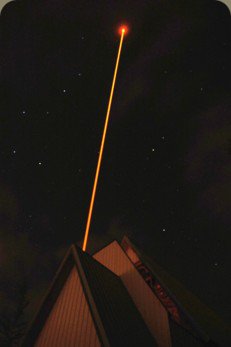The LZT lidar system
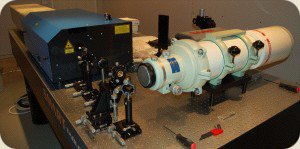 The lidar system employs a
frquency-doubled 13 watt Nd:YAG laser (white box) to produce 10 ns
pulses
at a wavelength of 532 nm. These pulses are used to pump a dye laser
(blue box) that is tuned to the sodium D2-line resonanace wavelength of
589 nm. The pulses from the dye laser pass through a diverging lens and
45-degree mirror and then enter the 15 cm launch telescope (white
cylinder). The telescope collimates the light, producing a parallel
that passes
horizontally through a hole in the wall, into the main
observatory room.
The lidar system employs a
frquency-doubled 13 watt Nd:YAG laser (white box) to produce 10 ns
pulses
at a wavelength of 532 nm. These pulses are used to pump a dye laser
(blue box) that is tuned to the sodium D2-line resonanace wavelength of
589 nm. The pulses from the dye laser pass through a diverging lens and
45-degree mirror and then enter the 15 cm launch telescope (white
cylinder). The telescope collimates the light, producing a parallel
that passes
horizontally through a hole in the wall, into the main
observatory room.
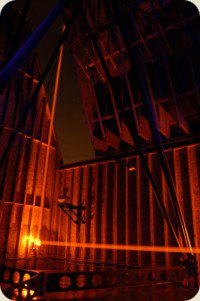 After
passing over
the 6-metre
liquid primary mirror of the Large Zenith Telescope, the beam strikes a
flat mirror that reflects it vertically upward.telescope.
After
passing over
the 6-metre
liquid primary mirror of the Large Zenith Telescope, the beam strikes a
flat mirror that reflects it vertically upward.telescope.
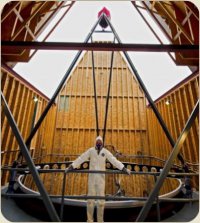 The detector employs
four sensitive photomultiplier
tubes that produce an electrical pulse for each detected photon.
The detector employs
four sensitive photomultiplier
tubes that produce an electrical pulse for each detected photon.
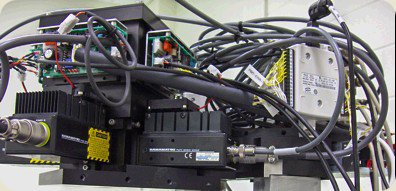
These pulses are recorded by an electronic system that can count up to a billion pulses per second and record their arrival times to an accuracy of a few billionths of a second.
